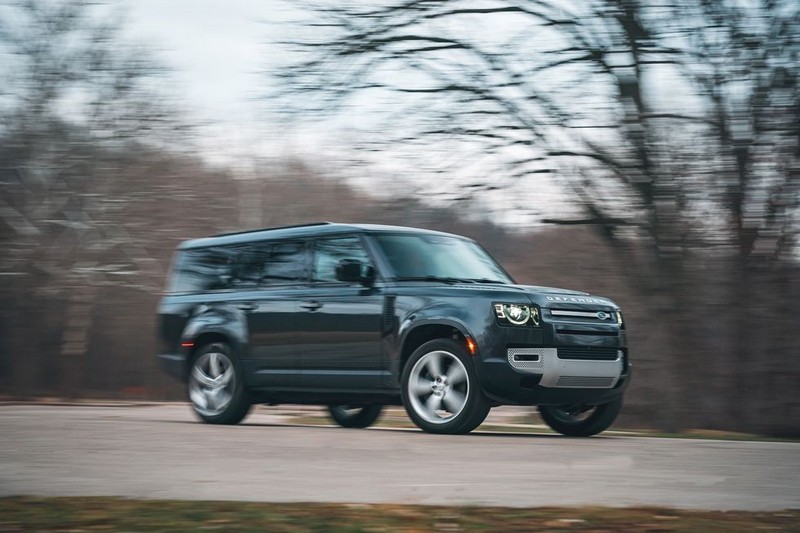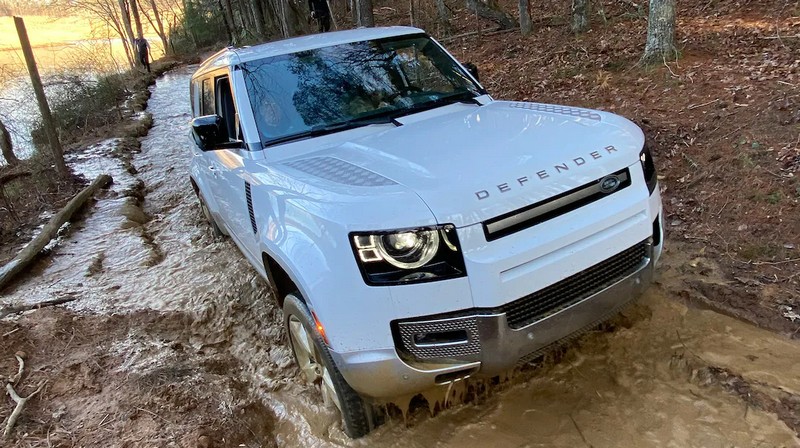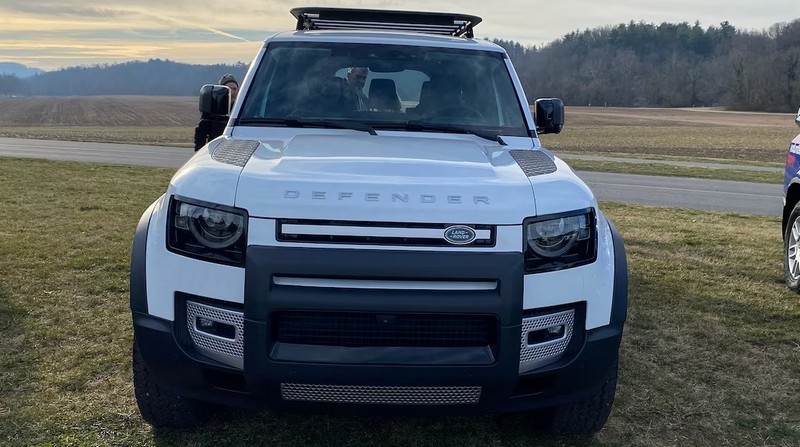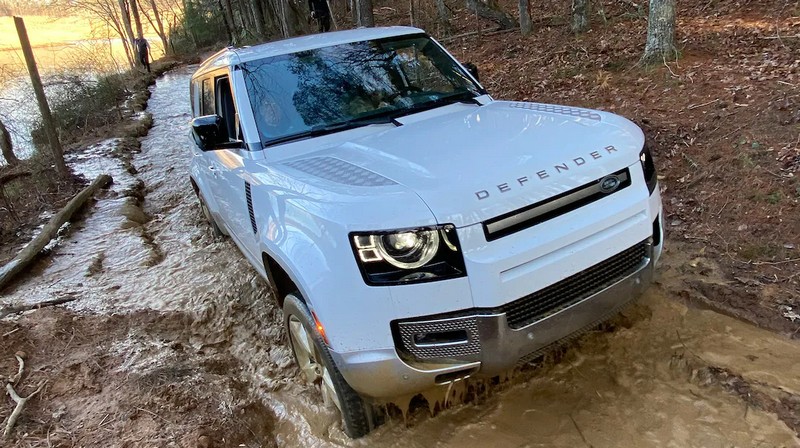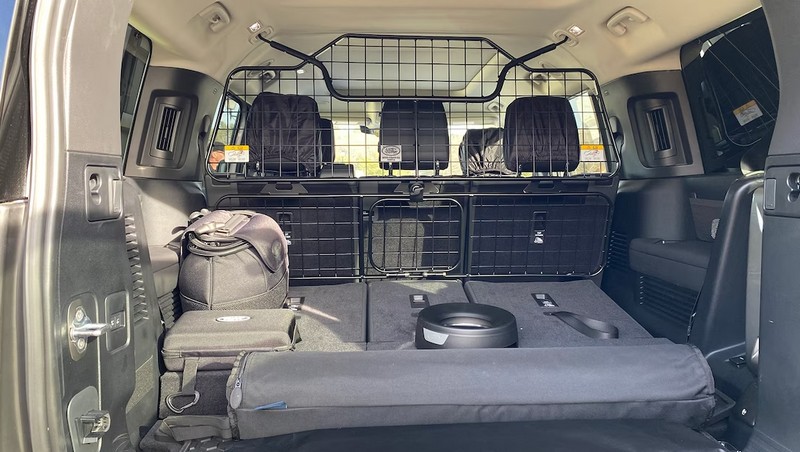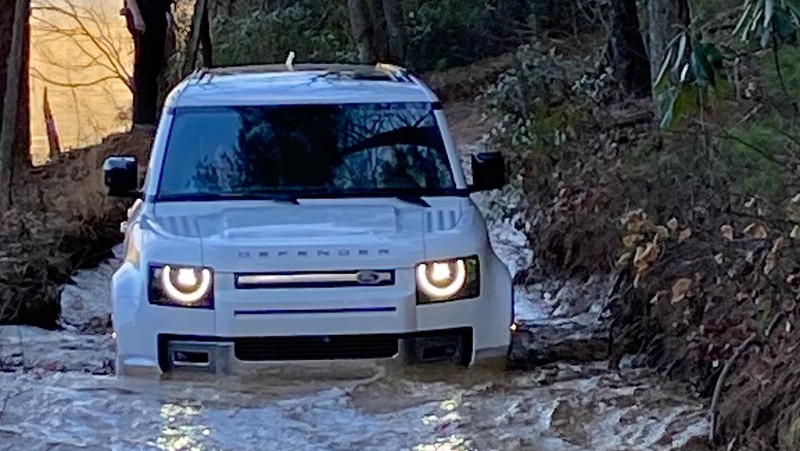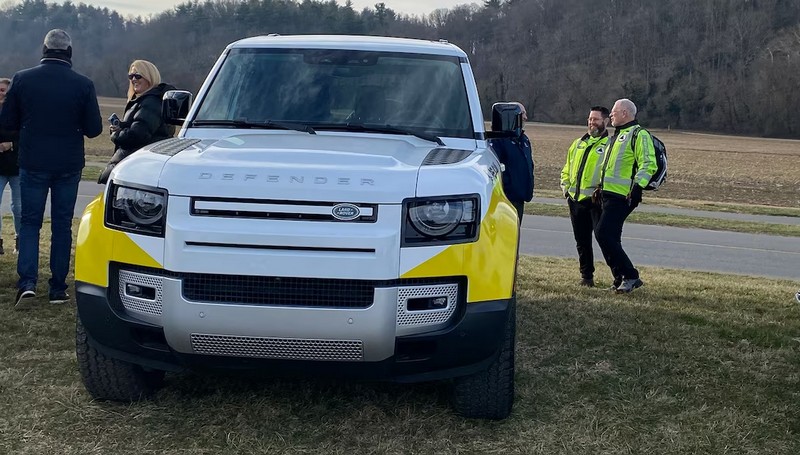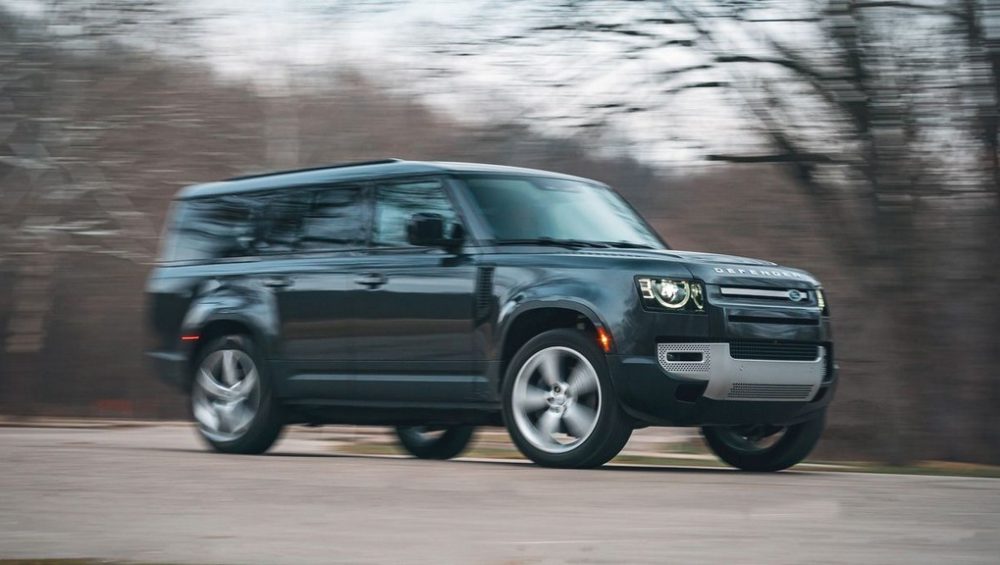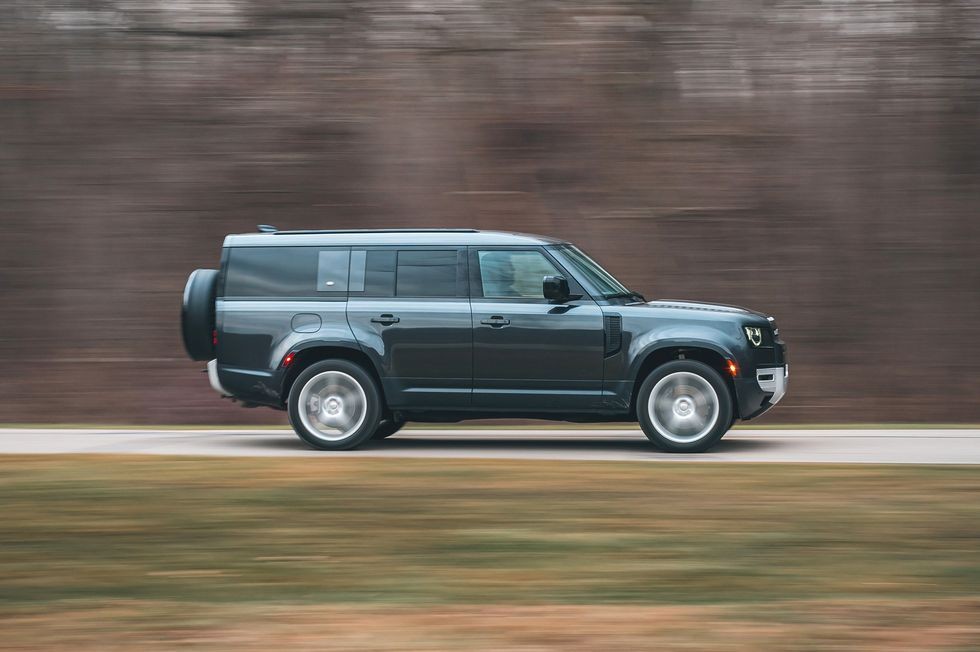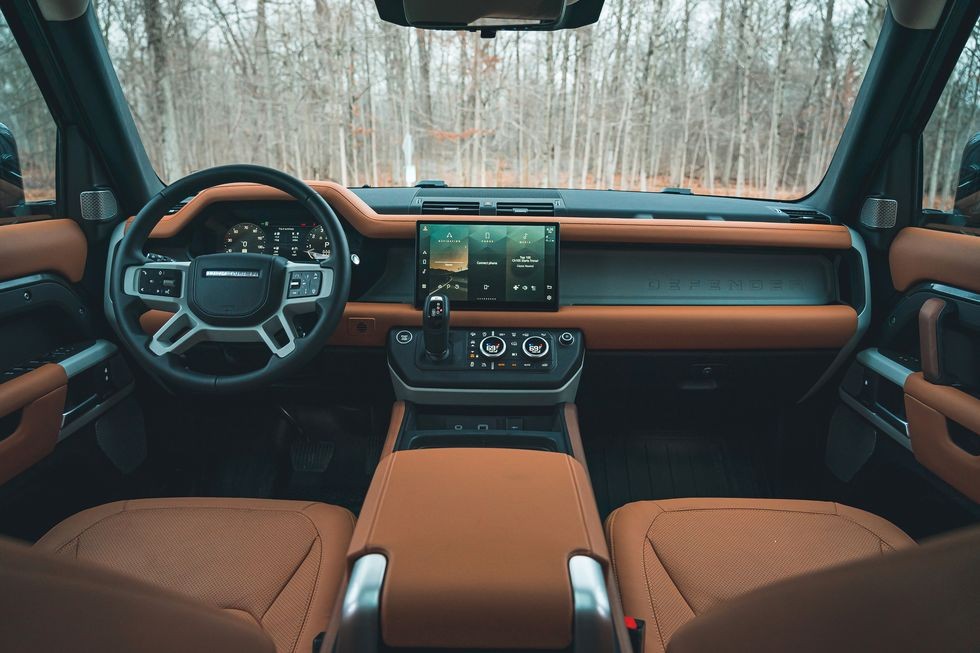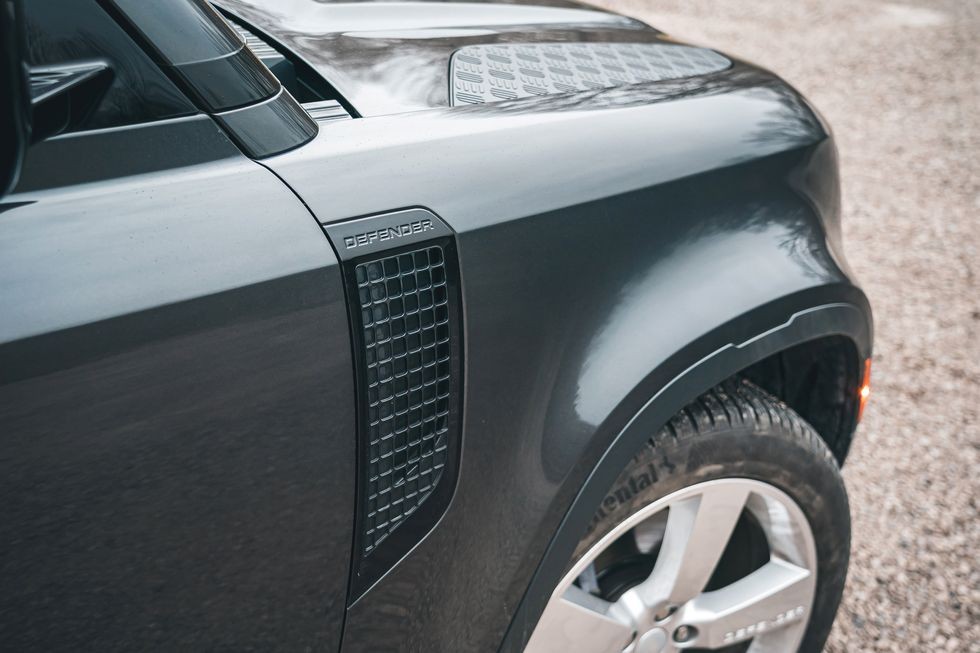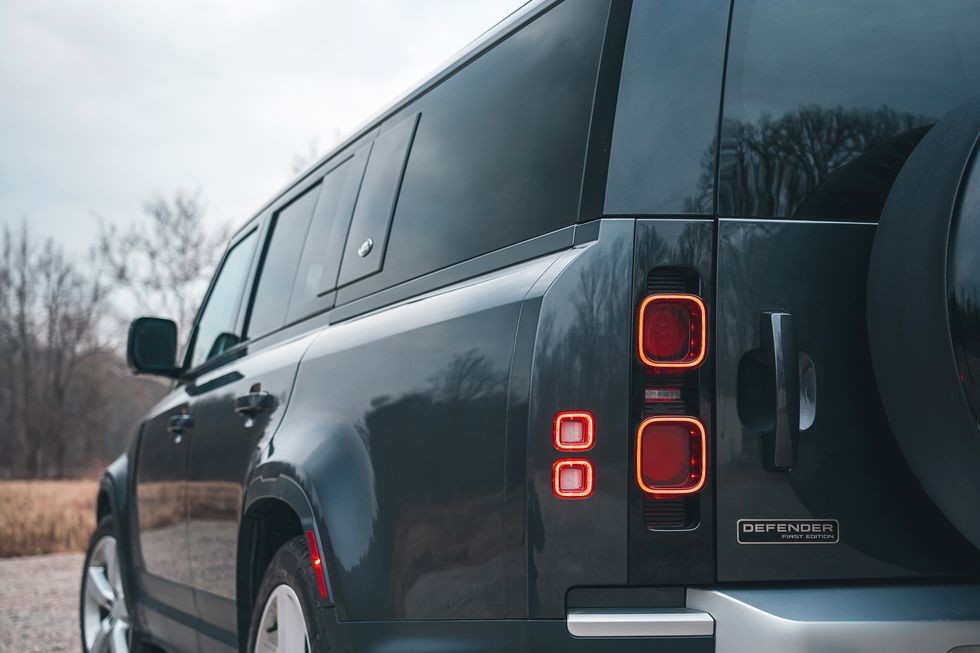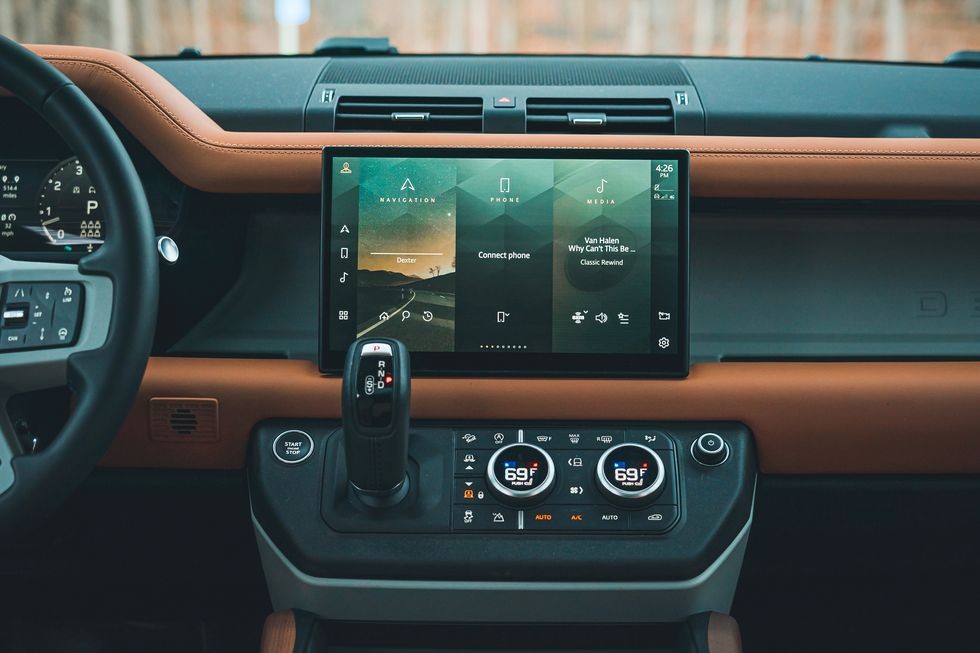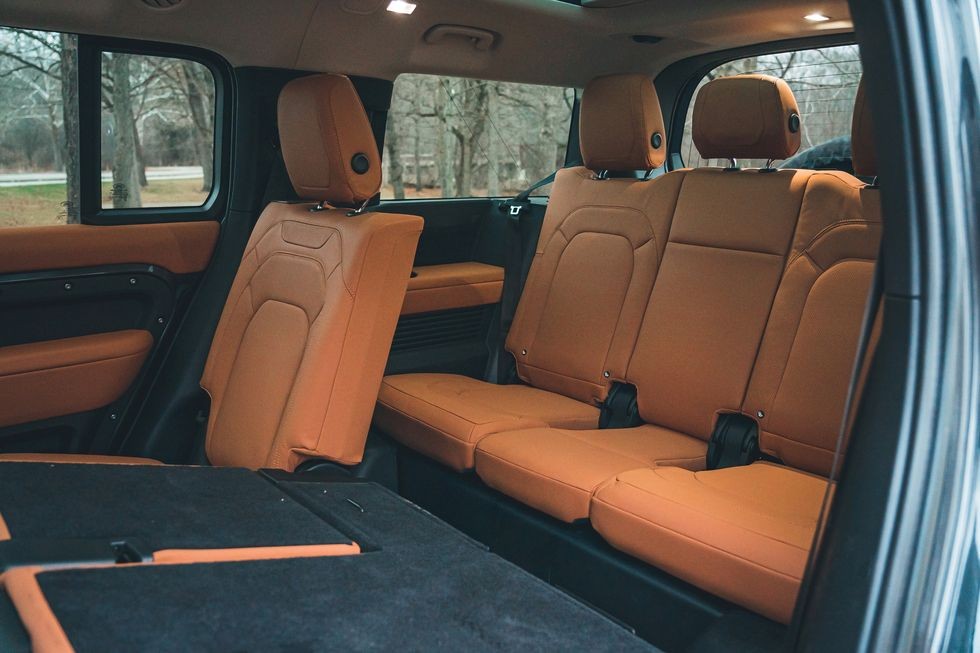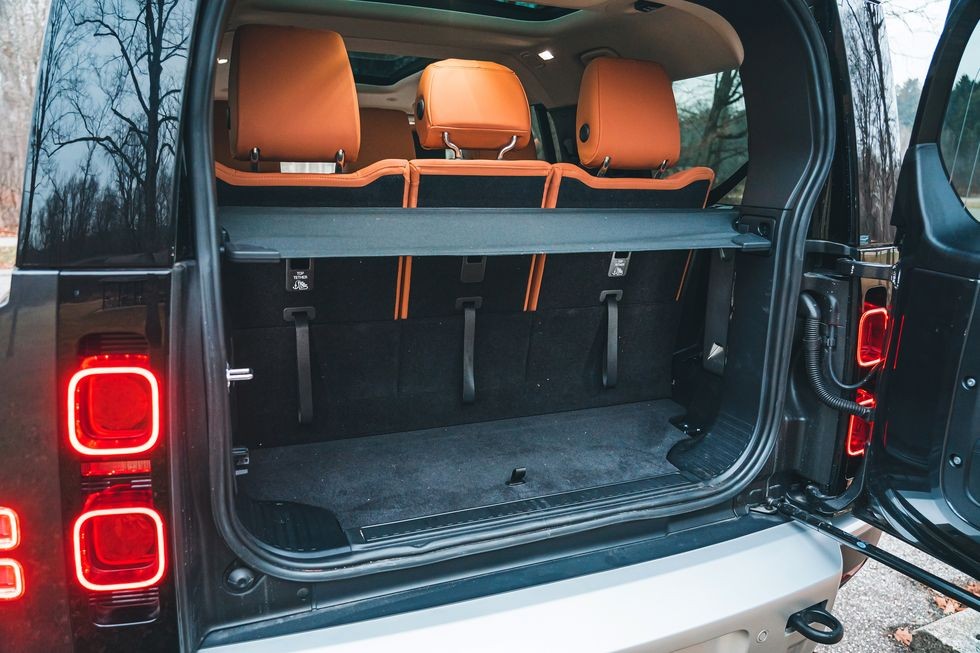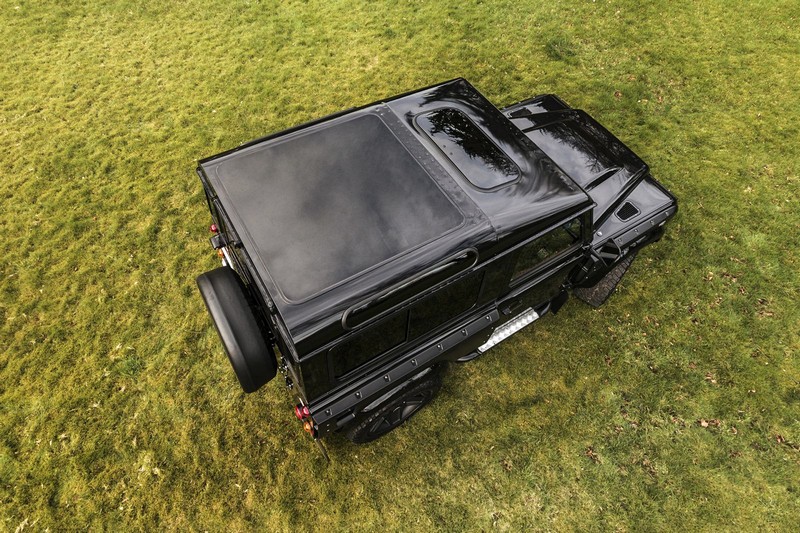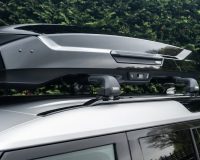The 2023 Land Rover is entirely modern in its designs, but it is unmistakably identical to the icon first released in the 1940s. The Defender appeared in two forms during its debut; the two-door 90 and the four-door 110. While the 110 is larger, the 90 has a greater appeal, even though the Defender 110 offers the option of adding a supplemental rear bench to the cargo area. At last appears the Defender 130, which is taffy-stretched, offers a genuine body style with a three-row seating package. The Land Rover 130 is said to be taffy-stretched because of its long rear overhang. It is said as a joke, even though that would never happen because the Land Rover is very heavy.
As you progress, you will discover many more amazing features of the Land Rover 130.
Features
The standard all-wheel-drive system has a two-speed transfer case where the center differential is lockable. The company makes this locking rear differential a part of the Off-Road package that costs roughly $1500. The Land Rover 130 can drive through 34 inches of water with a ground clearance of 11.4 inches.
This model comes with Land Rover’s Adaptive Dynamics and air springs as standard. Thanks to the sophisticated suspension, getting a ride in the 130 means getting a bouncy-free ride that isolates you from the broken pavement. One downside, however, for the drivers is that even though the steering wheel is weighted just right for an off-reader of its kind, you will have difficulty cornering because every inch of the 130’s size is felt during that act, thus, making your movement slow.
In the 2020 brake-by-wire system of the Land Rover, there was a serious complaint of difficulty with modulation. However, with this new model, the absence of this complaint has proved the Land Rover’s effectiveness in panic stops, such that the Land Rover can halt from 70 mph in just 165 feet.
The Exterior
The Land Rover 130 is shaped like a box with high suspension, pretty grilles, and headlamps. It is a heavy vehicle weighing about 5930 pounds and having a towing capacity of 8200 pounds. Even though the Land Rover Defender is a particularly long car, the Land Rover 130 is longer than the previous Defenders. It is longer than the 110 at 13.4 inches and longer than the 90 at about 30.3 inches.
This vehicle is a 4-door, front-engine 4-wheel drive wagon that conveniently takes eight passengers.
The Defender 130 lacks the space we expect it to have even in its max-cargo mode, where there are 80 cubic feet of cargo behind the front seats, which is about three cubic feet more than that of the three-row Land Rover 110.
The options for the exterior that helps to increase the price of this model include the 22 inches glossy sparkle silver wheels that go for $2000, a Carpathian Grey paint worth $1040, and the Towing Pack 2, going for $1800 which includes; advanced tow assist, tow hitch receiver, and configurable terrain response.
The Interior
An extra length equals more interior space. In the interior, most of the changes made to the last Land Rover Defender are seen in the 130. This vehicle has three rows of seating, with its backbench having enough headroom and legroom. Although the legroom has an additional 11 inches of space, the foot room is small. All seats have seat belts, USB-C ports, a supplemental sunroof, and an optional seat heater. Unlike the lesser Land Rover Defenders, the 130’s second-row captain’s chair is not hard anymore, and the front bench seat cannot carry an unusual three persons.
There is as much space in the 130 as you’d find in a Nissan Pathfinder, less than in other similar mid-sizers like the Chevrolet Traverse or the Hyundai Palisade. There is little space to pack many things in the 130, even with the long body, even if all seats are deployed. There is space for just four carry-on bags behind the rear seat. There are other features of the interior, like numerous storage cubbies, grab handles, and some durable finishes and extensive padded surfaces that prevent it from looking just basic but instead uniquely and positively different.
Engine and Performance
What is power, if not the turbo-boosted 3.0-liter inline-six engine that also features an electrically driven supercharger? This combination effectively helps to fight turbo lag. The 130’s engine has undergone a thorough trimming from top to bottom so that there is no V-8 and no turbo four. The two engines that promote the activities of this Land Rover are the P300, which produces 295 worth of horsepower, and the P400, which produces about 396 worth of horsepower. The latter is mostly used in all trim levels apart from the lowest trim.
Even though there is a 48-volt motor generator to help restart, the action could be snappy from the auto-stop-start system. The boosted six engines are quite muscular and smooth, but in order to aid careful modulation in certain off-pavement situations, a long-travel accelerator is put in place. The superb ZF-built eight-speed automatic installed in this model helps to shrug off the avoirdupois of the 130 to ensure that the task of propelling our well-built 130 is carried on. This is a great improvement from Land Rover because the 2020 Defender 110 SE, which was also given the same engine, requires about 6.2 seconds to climb from 0 to 60 mph and 14.9 seconds to coarse through a quarter-mile. On the other hand, the 130 moves from 0 to 60 mph in about 6.0 seconds, removing 0.2 seconds from the quarter-mile time of the 2020 Defender 110 SE as it powers through.
Pricing
The pricing for all runs of the Land Rover is different, which is normal. However, the 130 starts with the A trim level, skipping the steel-wheels stripper trim level. The S trim starts at $69 480, about $9700 higher than the 110 S trim. Aside from the S trim, there is the SE, the X-Dynamic SE, and then the X, which is retailed for $100 000, apart from the extra spend.
For every 19 miles, the Land Rover 130 is predicted to consume a gallon of fuel. EPA estimates on its fuel economy show that this model is better than the Defender 110X with the same powertrain and equipped with an Explorer package, a snorkel, a side-mounted gear carrier, and a roof rack by 1.2 mpg. For these 130 models, the estimates are at 18mpg city and 20 mpg highway.
Pros and Cons
Pros
- It is quite affordable
- It is better than its predecessors in almost every way
Cons
- It is quite slow when taking a turn
- It is quite slow when taking a turn
- It is not as spacious as it seems to be
Conclusion
The Land Rover 130 is the vehicle to carry a crowd with when sightseeing. Although there are not enough spaces for luggage, there are just enough for as many as eight or even 9. This is thanks to the stretch in both capability and size that Land Rover made. Apart from that, it is stylish and does cost a fortune.
[ngg src=”galleries” ids=”84″ display=”basic_thumbnail” thumbnail_crop=”0″]

